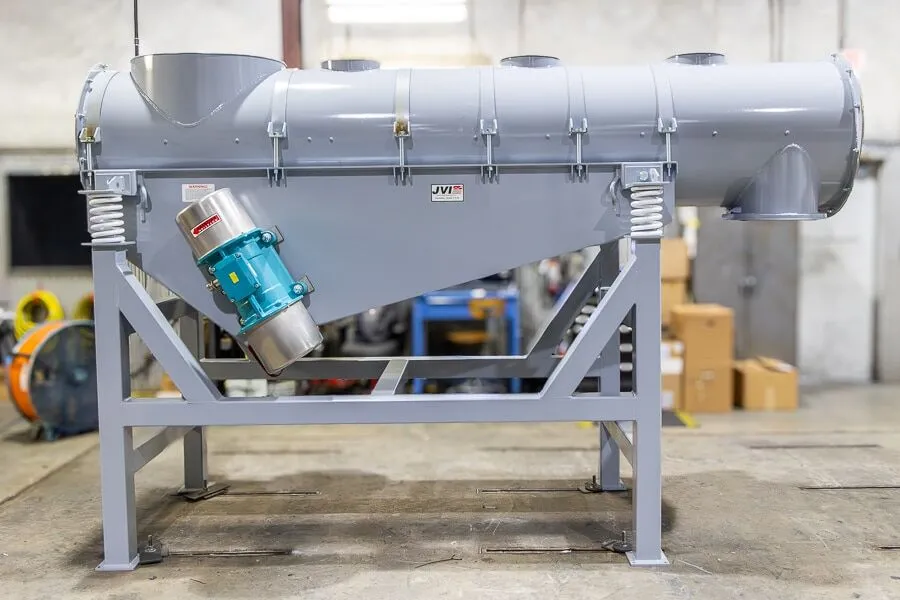
A customer reached out to JVI in need of a feeder that could provide feed rates of 50 TPH up to 150 TPH for their cement facility. The feeder will be placed under a pebble quicklime silo and regulate the flow of material onto a conveyor belt that will transport the material downstream for loading into railcars. The customer also asked if the feeder could be designed to control the dusting of the material as much as possible. After speaking with the customer about the application and gaining a full understanding of the requirements, JVI was able to develop a vibratory feeder package to meet their needs. The package that JVI proposed included:
Tube Feeder
A tube feeder design was chosen to address the customer’s requirements of controlling feed rate and dust management out of the silo. The fully enclosed tube offers superior dust control when compared to a pan feeder, while matching the feed rate control.
Single Mass Design
Single mass was chosen as the approach for the machine design. Single mass design utilizes fewer operating components resulting in high reliability and low maintenance. There are no “tuning” requirements, and the machine can operate through variations in material and head load.
Electromechanical “Unbalanced” Motors
Electromechanical motors were chosen as the vibratory drives for the tube feeder. The motors were sized to allow for field adjustment and optimization of the operating parameters through a variable frequency drive or by mechanically setting the motor.
Static Downcomer
A static downcomer was included to transition the material from the silo into the feeder. It also sets the material height of the quicklime within the feeder, which helps maintain a predictable flow of material. The static downcomer works in combination with a dust tight collar and jacket, also known as a flex boot, to help manage dusting of the quicklime.
Inspection Ports
Inspection ports were added to the top of the tube to allow for easier cleanout and inspection of the feeder in the field. Rubber port covers were included to maintain dust management while the feeder is in operation.
Liners
To address the high volume and abrasive characteristics of the quicklime, replaceable, bolt on Hardox wear liners were added to feeder on the material contact areas. These liners protect the feeder from the material and increase the overall operating life of the equipment.
Isolation Coil Springs
Isolation coil springs were used to support the feeder on the stand. This ensures that the vibration from the feeder was not transferred to the support structure holding the silos and belt conveyors.
Stand
A custom stand for the feeder was included to place the equipment within the work envelope.
The tube feeder package provides dust management and a controlled feed rate that meets the requirements of the application provided by the customer. The package was approved and JVI began manufacturing the feeder. Today the feeder has been installed and feeding quicklime from the silo onto the belt conveyor and down to the railcar loading station.